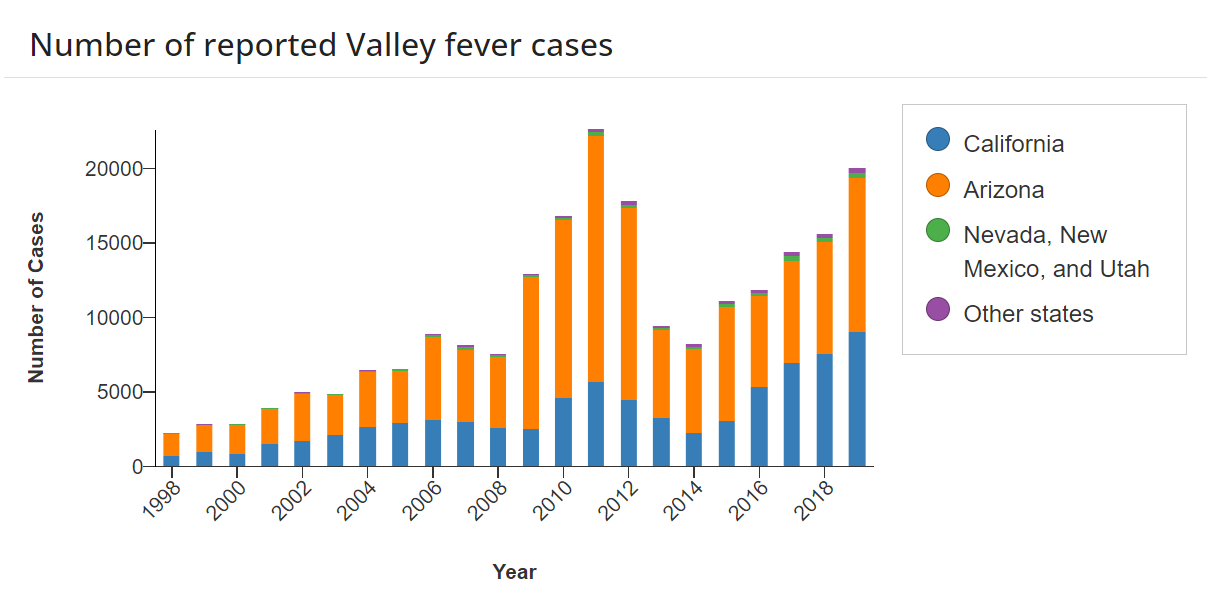The Valley Fever Collaborative is an organization that was created in 2021 to coordinate activities addressing the economic and public health problems that Valley fever poses to the state of Arizona and beyond. As you can see by the graph below, Arizona contributes largely to the number of reported Valley fever cases.

CDC 4/22
Valley fever, scientifically known as coccidioidomycosis, is a fungal infection caused by the inhalation of spores from the soil-dwelling fungus Coccidioides. Primarily endemic to arid regions of the southwestern United States, particularly the San Joaquin Valley of California and the desert areas in Arizona, this silent threat affects thousands of people each year. However, recent advancements in Valley fever research have brought hope for improved diagnostics, treatment options, and risk and prevention strategies.

The Valley Fever Collaborative (VFC) involves a group of scientists, healthcare professionals, and public health agencies working together with affected communities. Collaborations between researchers and clinicians are essential for translating scientific discoveries into practical applications that benefit patients. Moving forward, continued investment in research, funding, and knowledge-sharing is necessary to advance our understanding of Valley fever, develop new treatment options, and ultimately strive towards its prevention and eradication.
This area will highlight members of the VFC that continue to work together developing treatments and solutions for Valley fever.
Jed Bayasi graduated from medical school in Syria 1993, internal medicine training in Michigan 2019, pulmonary training in Mount Sinai, New York 2001, and critical care training at the University of Arizona in Tucson 2007. It wasn’t until he contracted Valley fever himself that he became more aware of the symptoms of this disease.
“My interest in Valley fever started as I personally contracted the disease, initially diagnosed with viral illness, then bacterial pneumonia and finally the diagnosis of Valley fever was made after being ill for a month” says Dr. Bayasi. “Being on the lookout placed me at the front line in diagnosing and managing the disease.”
To date, Dr. Bayasi still believes that Valley fever is under diagnosed and that delaying the diagnosis could lead to significant health consequences.

